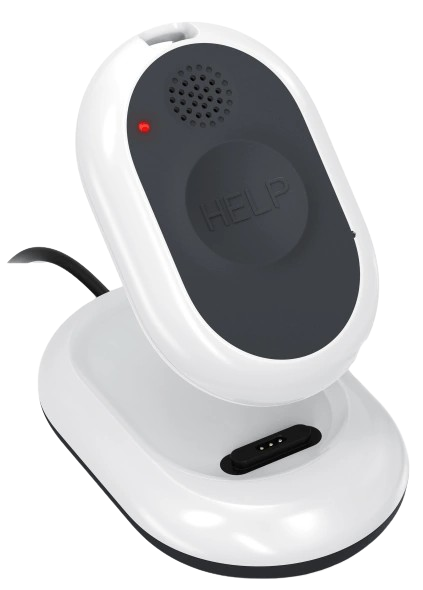In New Mexico, industries such as oil and gas, agriculture, healthcare, and public utilities employ thousands of workers who often perform tasks alone or in remote areas. These “lone workers” face increased safety risks due to the lack of nearby coworkers or immediate supervision. For employers, recognizing and mitigating the unique hazards of lone work is critical to maintaining a safe and legally compliant workplace.
New Mexico operates its own OSHA-approved state plan—administered by the New Mexico Occupational Health and Safety Bureau (OHSB), a division of the New Mexico Environment Department (NMED). This state-run program applies to both private- and public-sector employees, making New Mexico one of the few states to fully manage workplace safety enforcement at the local level.
On This Page
Our Guide To Lone Worker Safety Policy And Legislation In New Mexico
Because New Mexico enforces its own occupational safety regulations through the OHSB, employers must follow rules that are at least as effective as federal OSHA standards, and in some cases, more specific or stringent. While New Mexico does not have a regulation that exclusively addresses lone workers, employers are still required to identify and control the hazards associated with employees working alone under the General Duty Clause and applicable safety standards.
The OHSB conducts inspections, issues citations, and provides outreach and training to support safety in workplaces across the state. Employers are encouraged to utilize these services and stay informed through the OHSB section of the NMED website.
How New Mexico Defines A Lone Worker
New Mexico does not provide a statutory definition of “lone worker,” nor does federal OSHA. However, the term generally refers to an employee who performs work without direct supervision and may be isolated from assistance in the event of an emergency.
Examples of lone workers in New Mexico include:
- Oil field technicians and pump operators working in remote locations
- Home health aides and hospice workers visiting patients
- Utility inspectors, field service technicians, and meter readers
- Agricultural workers operating alone in fields or barns
- Janitors and security staff during night shifts or at closed facilities
- Public employees conducting fieldwork or site inspections alone
These roles present elevated safety concerns due to delayed emergency response and limited communication access.
Employing A Lone Worker In New Mexico
Employers in New Mexico must take proactive steps to protect lone workers by identifying potential risks and implementing control measures that prioritize safety. Given the state’s large rural areas and remote work sites, these steps are particularly important in New Mexico’s energy, agriculture, and healthcare sectors.
Key best practices include:
- Hazard Identification: Assess tasks, environments, and tools associated with lone work.
- Clear Safety Procedures: Develop protocols for emergencies, check-ins, and reporting incidents.
- Monitoring and Communication: Use mobile apps or communication tools to stay in contact with lone workers.
- Emergency Preparedness: Ensure workers know how to respond to accidents, health events, or violent encounters.
- Training and Drills: Provide regular training on personal safety, hazard awareness, and use of safety devices.
Learn How You Can Protect Your Employees With Loneworker.com

With Loneworker.com you can be equipped with the knowledge and the means to protect your employees and protect your business. Contact us today to learn more about how Loneworker.com can protect you and your employees.
How The Safe Lone Worker App Can Protect New Mexico Lone Workers And Employers
The Safe Lone Worker app is designed to enhance worker protection in remote and isolated settings. With features like automated check-ins, GPS tracking, panic buttons, and fall detection, the app enables employers to monitor employees in real time and ensure rapid response when help is needed.
In a state like New Mexico—where vast distances and rugged terrain can delay assistance—the Safe Lone Worker app helps bridge the gap between remote workers and their safety teams. It also helps employers demonstrate compliance with OHSB requirements and fulfill their duty to provide a safe work environment.
New Mexico Lone Worker Policies
Under the jurisdiction of the New Mexico Occupational Health and Safety Bureau (OHSB), all private- and public-sector employers must comply with safety standards designed to prevent workplace injuries and fatalities. While there is no lone worker-specific rule, employers must evaluate risks tied to isolated or unsupervised work and address them under general safety and health obligations.
This article is provided for general information only and is not a substitute for legal advice or official safety consultation.
New Mexico Lone Worker Resources
OHS Contact Centre
- 1-866-415-8690
CDC / NIOSH
- 800-232-4636

Affordable Monitoring For Lone Workers In New Mexico

-
 Monitoring Your Employees' Safety
Monitoring Your Employees' Safety
-
 GPS Tracking And Monitoring
GPS Tracking And Monitoring
-
 Man Down Panic Alerts
Man Down Panic Alerts
-
 24/7 Protection Anywhere
24/7 Protection Anywhere
Lone Worker Legislation
Lone Worker Safety Policies And Legislation By State
-
 Alabama State Safety Policies And Legislation
Alabama State Safety Policies And Legislation
-
 Alaska State Safety Policies And Legislation
Alaska State Safety Policies And Legislation
-
 Arizona State Safety Policies And Legislation
Arizona State Safety Policies And Legislation
-
 Arkansas State Safety Policies And Legislation
Arkansas State Safety Policies And Legislation
-
 California State Safety Policies And Legislation
California State Safety Policies And Legislation
-
 Colorado State Safety Policies And Legislation
Colorado State Safety Policies And Legislation
-
 Connecticut State Safety Policies And Legislation
Connecticut State Safety Policies And Legislation
-
 Delaware State Safety Policies And Legislation
Delaware State Safety Policies And Legislation
-
 Florida State Safety Policies And Legislation
Florida State Safety Policies And Legislation
-
 Georgia State Safety Policies And Legislation
Georgia State Safety Policies And Legislation
-
 Hawaii State Safety Policies And Legislation
Hawaii State Safety Policies And Legislation
-
 Idaho State Safety Policies And Legislation
Idaho State Safety Policies And Legislation
-
 Illinois State Safety Policies And Legislation
Illinois State Safety Policies And Legislation
-
 Indiana State Safety Policies And Legislation
Indiana State Safety Policies And Legislation
-
 Iowa State Safety Policies And Legislation
Iowa State Safety Policies And Legislation
-
 Kansas State Safety Policies And Legislation
Kansas State Safety Policies And Legislation
-
 Kentucky State Safety Policies And Legislation
Kentucky State Safety Policies And Legislation
-
 Louisiana State Safety Policies And Legislation
Louisiana State Safety Policies And Legislation
-
 Maine State Safety Policies And Legislation
Maine State Safety Policies And Legislation
-
 Maryland State Safety Policies And Legislation
Maryland State Safety Policies And Legislation
-
 Massachusetts State Safety Policies And Legislation
Massachusetts State Safety Policies And Legislation
-
 Michigan State Safety Policies And Legislation
Michigan State Safety Policies And Legislation
-
 Minnesota State Safety Policies And Legislation
Minnesota State Safety Policies And Legislation
-
 Mississippi State Safety Policies And Legislation
Mississippi State Safety Policies And Legislation
-
 Missouri State Safety Policies And Legislation
Missouri State Safety Policies And Legislation
-
 Montana State Safety Policies And Legislation
Montana State Safety Policies And Legislation
-
 Nebraska State Safety Policies And Legislation
Nebraska State Safety Policies And Legislation
-
 Nevada State Safety Policies And Legislation
Nevada State Safety Policies And Legislation
-
 New Hampshire State Safety Policies And Legislation
New Hampshire State Safety Policies And Legislation
-
 New Jersey State Safety Policies And Legislation
New Jersey State Safety Policies And Legislation
-
 New Mexico State Safety Policies And Legislation
New Mexico State Safety Policies And Legislation
-
 New York State Safety Policies And Legislation
New York State Safety Policies And Legislation
-
 North Carolina State Safety Policies And Legislation
North Carolina State Safety Policies And Legislation
-
 North Dakota State Safety Policies And Legislation
North Dakota State Safety Policies And Legislation
-
 Ohio State Safety Policies And Legislation
Ohio State Safety Policies And Legislation
-
 Oklahoma State Safety Policies And Legislation
Oklahoma State Safety Policies And Legislation
-
 Oregon State Safety Policies And Legislation
Oregon State Safety Policies And Legislation
-
 Pennsylvania State Safety Policies And Legislation
Pennsylvania State Safety Policies And Legislation
-
 Rhode Island State Safety Policies And Legislation
Rhode Island State Safety Policies And Legislation







